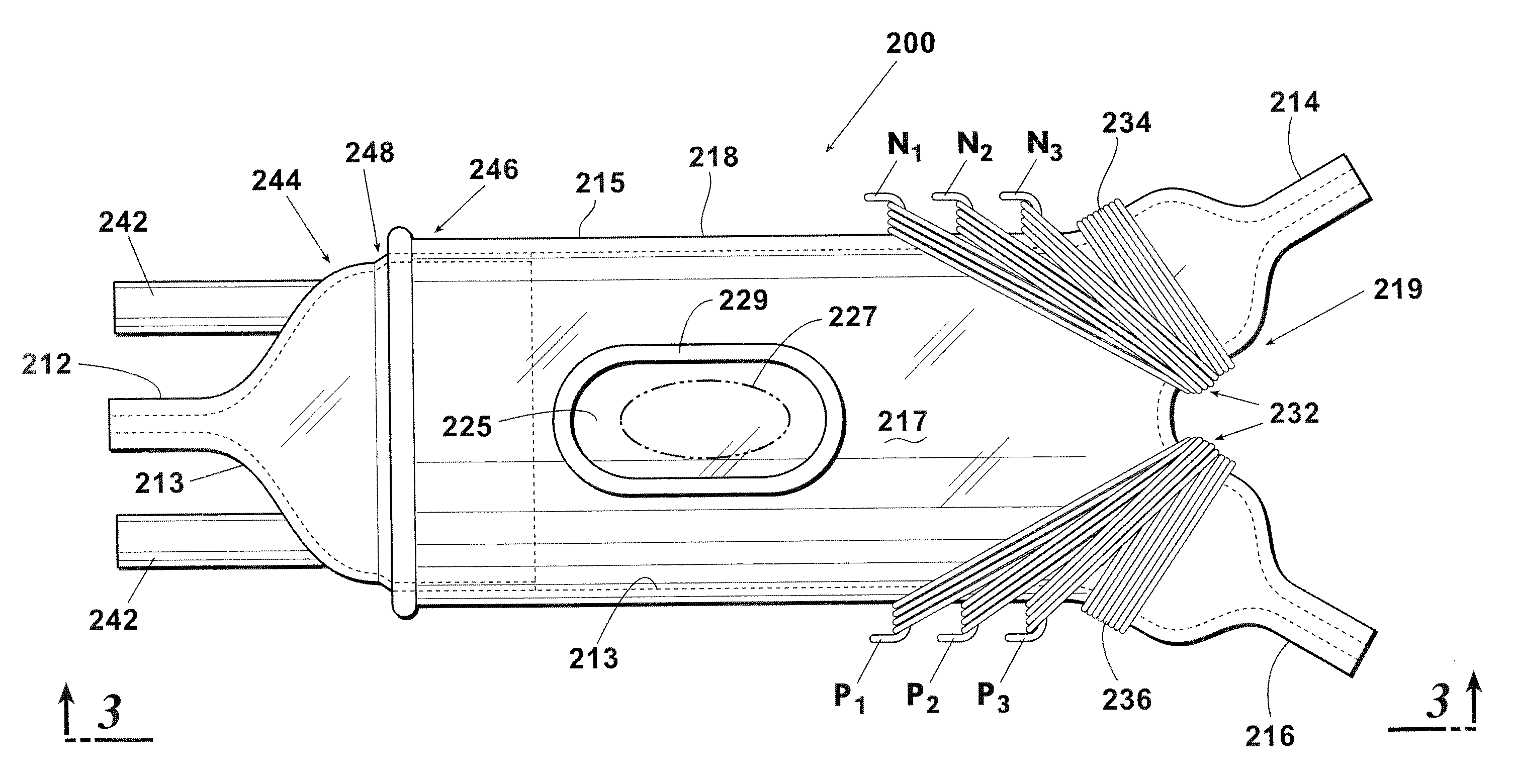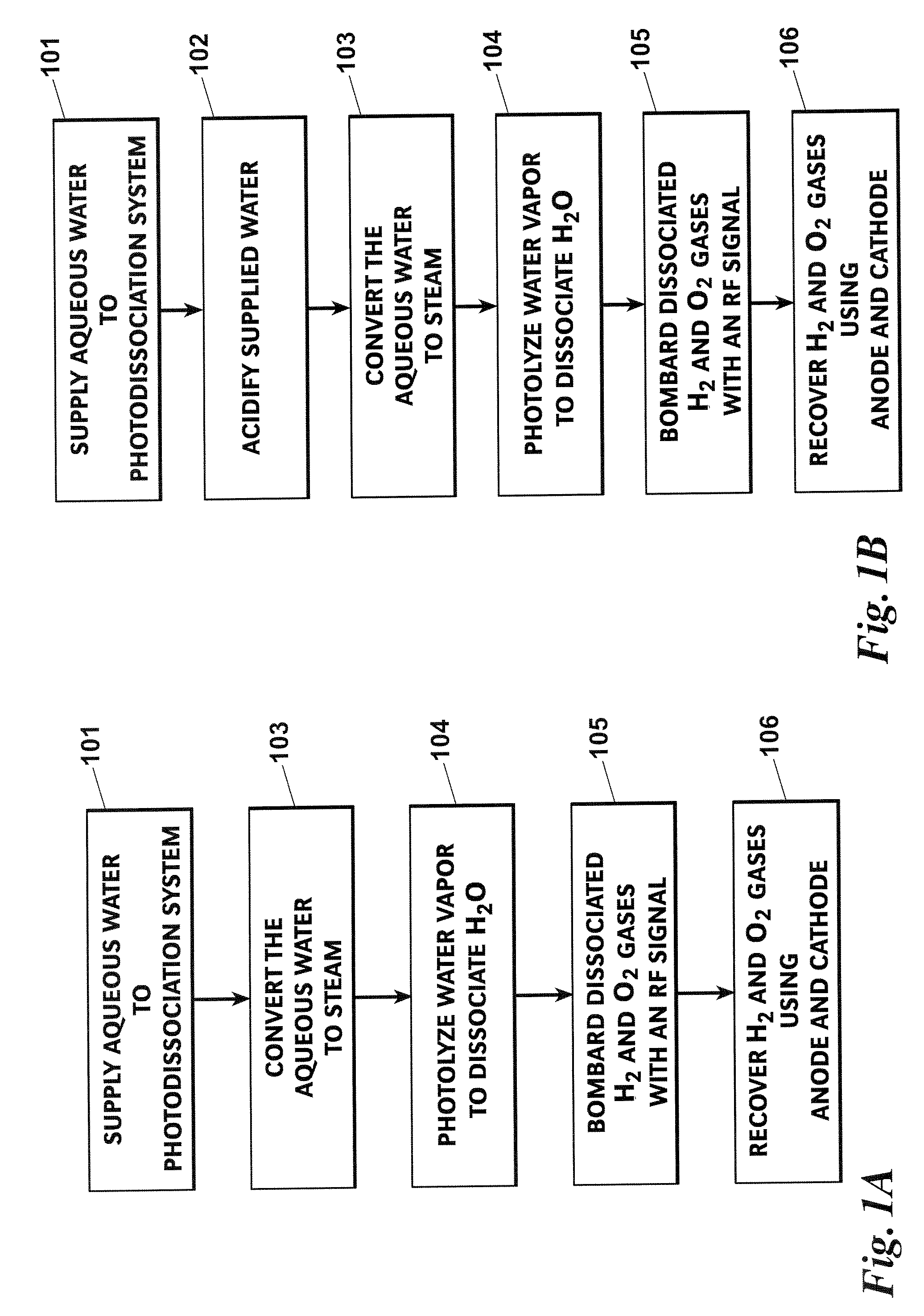Reaction vessel including fielding apparatus
a fielding apparatus and reaction vessel technology, applied in the field of reaction vessels, can solve the problems of high material and maintenance costs of systems employing catalysts, prone to recombination, and volatility of hydrogen obtained from superheated steam, so as to achieve fast dissociation of water molecules, lower cost, and high purity
- Summary
- Abstract
- Description
- Claims
- Application Information
AI Technical Summary
Benefits of technology
Problems solved by technology
Method used
Image
Examples
second embodiment
[0028] The energy required to dissociate the water molecule has previously been cost prohibitive to obtain hydrogen as a fuel, as the energy required to produce the H2 fuel has been greater than the energy provided by the H2 fuel produced. The present invention now describes a system which utilizes molecular water in a controlled state, specifically water vapor in one embodiment and acidic water vapor in a second embodiment, to more efficiently produce H2 fuel.
[0029] Previous drawbacks of photo-dissociation systems have included the almost immediate recombination of the H2 and O2 constituents. The present disclosure employs a radiolysis approach in which the H2 and O2 constituents are bombarded with RF frequency ionizing radiation to inhibit their recombination. The frequency ionizing radiation maintains the dissociated components in an ion plasma environment. The use of RF frequency ionizing radiation thereby results in higher conversion efficiency of the system.
[0030] An addition...
embodiment 350
[0035]FIG. 6 is a simplified block diagram depicting an embodiment 350 of a dissociation system employing the method illustrated in FIGS. 1A and 1B. The exemplary system illustrates a reaction vessel 352 having an inlet 362 for water, an oxygen outlet 364 and a hydrogen outlet 366, at least one radiolysis apparatus 354, such as RF emitter apparatus in communication with reaction vessel 352, at least one photolysis apparatus 355 in communication with reaction vessel 352 to emit light (or photon energy) into vessel 352, at least one electromagnetic fielding apparatus 356 in communication with reaction vessel 352 to effect migration of the respective gases (oxygen and hydrogen) to exit the vessel, and at least one catalyst 360 located within the reaction chamber 358 of reaction vessel 352.
[0036] In a preferred embodiment, the interior of reaction vessel 352 includes a catalyst apparatus comprised of a matrix including a catalyst (or photo-catalyst). The matrix is quartz wool which incl...
embodiment 500
[0059] As stated, FIG. 5 shows a simplified block diagram of an embodiment 500 of an seawater distillation system which utilizes the solid oxide fuel cell 510 in combination with the water disassociation system of the present invention. Inlet pump 502 draws in seawater from an exterior source. Seawater is then provided to at least one water purifiers, collectively 504. These purifiers remove brine and other contaminants. The brine is stored in a brine retention apparatus 506. One part of the purified water is provided to the reaction vessel 508 to undergo the splitting of its water molecules into separate hydrogen and oxygen molecules. The other part of the purified water is provided to a distillation apparatus 512 to undergo a distillation of salt therefrom. At least a part of the oxygen and / or hydrogen which is produced by the disassociation process set out above is provided to the solid oxide fuel cell 510. The solid oxide fuel cell 510 the produces heat and power to effectuate t...
PUM
 Login to View More
Login to View More Abstract
Description
Claims
Application Information
 Login to View More
Login to View More - R&D
- Intellectual Property
- Life Sciences
- Materials
- Tech Scout
- Unparalleled Data Quality
- Higher Quality Content
- 60% Fewer Hallucinations
Browse by: Latest US Patents, China's latest patents, Technical Efficacy Thesaurus, Application Domain, Technology Topic, Popular Technical Reports.
© 2025 PatSnap. All rights reserved.Legal|Privacy policy|Modern Slavery Act Transparency Statement|Sitemap|About US| Contact US: help@patsnap.com



